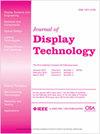Is There a Proper Way to Teach Design Thinking? Empirical Evidence from Design Thinking in Education
Q Engineering
引用次数: 2
Abstract
Since about a decade ago, design thinking has become a prominent topic in the scientific and business world. In order to keep up with global competition, design thinking has proven to be a valuable concept for assisting companies to innovate their products, services and processes. Therefore, business schools worldwide have introduced design thinking courses with the aim of preparing the future workforce. Scholars debate about the appropriate approach to teach design, with this paper trying to identify how a design thinking course should be arranged to teach non-designers the processes, methods and mindset of design thinking. It deals with the question of which form of knowledge conversion is more effective for bringing non-design students closer to the design thinking mindset. To answer this, it reviews current studies on design thinking in education. In particular, the research refers to Simon’s and Schon’s concepts of science of design and reflection-in-action, along with Nonaka and Takeushi’s SECI model. The research involves an experiment with two similar one-week design thinking courses, each having different teaching approaches. The courses are then compared through analysis of reflection reports by students, semi-structured interviews with them and a survey. This research shows that applying design thinking knowledge to real-life projects should be a core element in design thinking curricula, as it plays a crucial role in successfully imparting design thinking. Further, co-teaching and co-learning modes, where designers and non-designers work together and socialization takes place, is more appropriate for imparting design thinking than instructional teaching and learning modes, where design thinking coaches instruct non-designers to internalize design thinking.是否有一种合适的方法来教授设计思维?设计思维在教育中的经验证据
自大约十年前以来,设计思维已经成为科学界和商界的一个突出话题。为了跟上全球竞争,设计思维已经被证明是一个有价值的概念,可以帮助公司创新他们的产品、服务和流程。因此,世界各地的商学院都开设了设计思维课程,旨在培养未来的劳动力。学者们争论设计教学的合适方法,本文试图确定如何安排设计思维课程来教授非设计师设计思维的过程、方法和心态。它涉及的问题是,哪种形式的知识转换更有效地使非设计专业的学生更接近设计思维的心态。为了回答这个问题,本文回顾了目前关于设计思维在教育中的研究。本研究特别参考了Simon和Schon的设计科学和行动中反思的概念,以及Nonaka和Takeushi的SECI模型。这项研究包括两个类似的为期一周的设计思维课程的实验,每个课程都有不同的教学方法。然后,通过分析学生的反思报告、对他们进行半结构化访谈和调查,对课程进行比较。本研究表明,将设计思维知识应用到实际项目中应该成为设计思维课程的核心要素,因为它对成功传授设计思维起着至关重要的作用。与设计思维教练指导非设计师内化设计思维的指导性教学模式相比,设计师与非设计师共同工作、进行社会化的合作教学模式更适合传授设计思维。
本文章由计算机程序翻译,如有差异,请以英文原文为准。
求助全文
约1分钟内获得全文
求助全文
来源期刊

Journal of Display Technology
工程技术-工程:电子与电气
CiteScore
1.50
自引率
0.00%
发文量
0
审稿时长
2.8 months
期刊介绍:
This publication covers the theory, material, design, fabrication, manufacturing and application of information displays and aspects of display technology that emphasize the progress in device engineering, design and simulation, materials, electronics, physics, and reliability aspects of displays and the application of displays. The Journal is sponsored by EDS, seven other IEEE societies (BT, CES, CPMT, IA, IM, PHO and SSC) and the Optical Society of America (OSA).
 求助内容:
求助内容: 应助结果提醒方式:
应助结果提醒方式:


